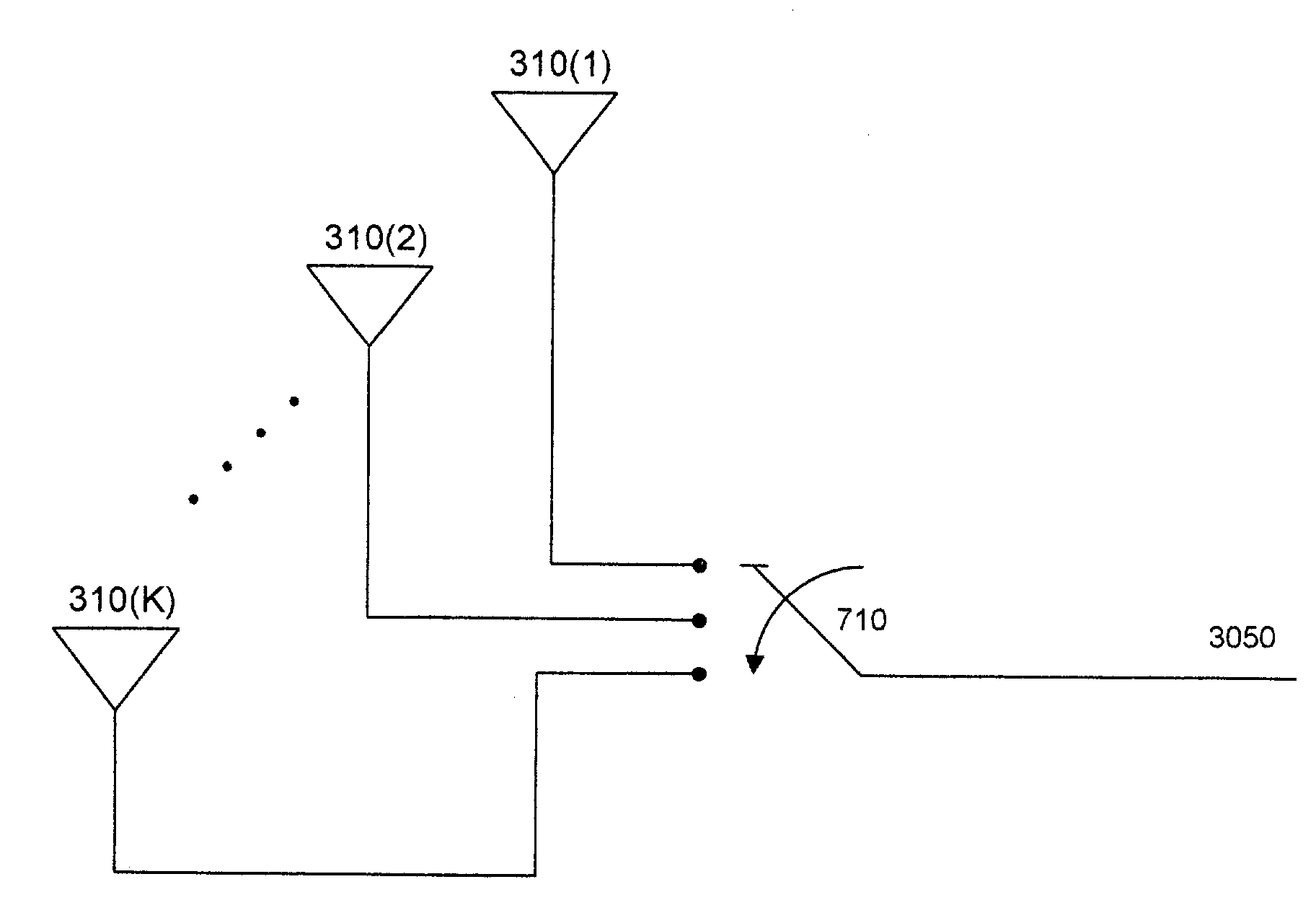Selecting a set of antennas for use in a wireless communication system
a wireless communication system and antenna technology, applied in the field of wireless communication systems, can solve the problems of increasing the complexity of the interface between the paths and the baseband chip, increasing the cost of additional components and costs for the system, and increasing the difficulty of transferring data through the antenna
- Summary
- Abstract
- Description
- Claims
- Application Information
AI Technical Summary
Benefits of technology
Problems solved by technology
Method used
Image
Examples
Embodiment Construction
System Overview
[0019]FIG. 1 shows a wireless communication system 100 upon which embodiments of the invention may be implemented. Exemplary technologies used in system 100 includes the code-division multiple access (CDMA), the time-division multiple access (TDMA), the global system for mobile communications (GSM), etc. System 100 includes an access point 125 and a plurality of stations 130(1), 130(2), . . . , 130(N). Access point 125 includes an access station 110 connected to a smart antenna 120. In one embodiment, access point 125 is connected to an electronic network (not shown), which transmits information through access station 110, smart antenna 120, and wirelessly to stations 130. Similarly, the network wirelessly receives information from stations 130 through smart antenna 120 and access station 110, etc. Generally, access station 110 processes signals received or sent through antenna 120. To improve reception and transmission performance of a particular station 130, access ...
PUM
 Login to View More
Login to View More Abstract
Description
Claims
Application Information
 Login to View More
Login to View More - R&D
- Intellectual Property
- Life Sciences
- Materials
- Tech Scout
- Unparalleled Data Quality
- Higher Quality Content
- 60% Fewer Hallucinations
Browse by: Latest US Patents, China's latest patents, Technical Efficacy Thesaurus, Application Domain, Technology Topic, Popular Technical Reports.
© 2025 PatSnap. All rights reserved.Legal|Privacy policy|Modern Slavery Act Transparency Statement|Sitemap|About US| Contact US: help@patsnap.com



